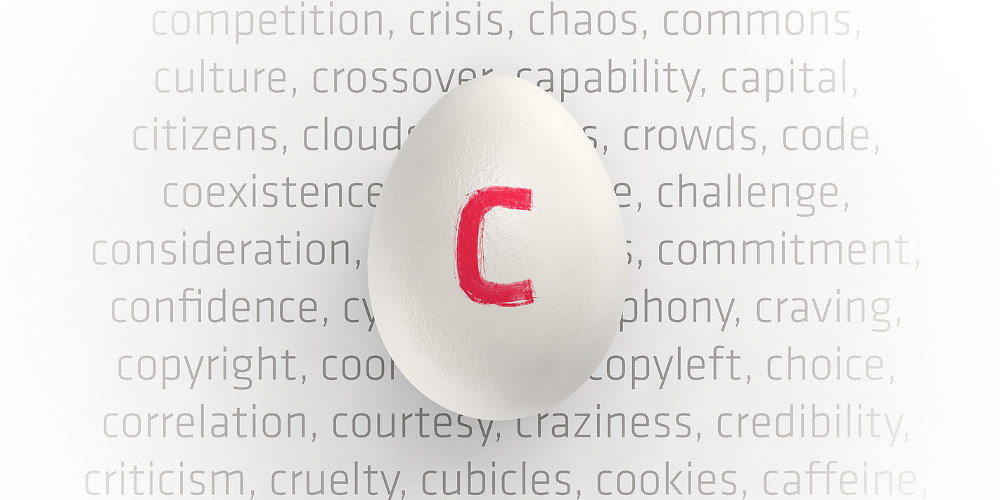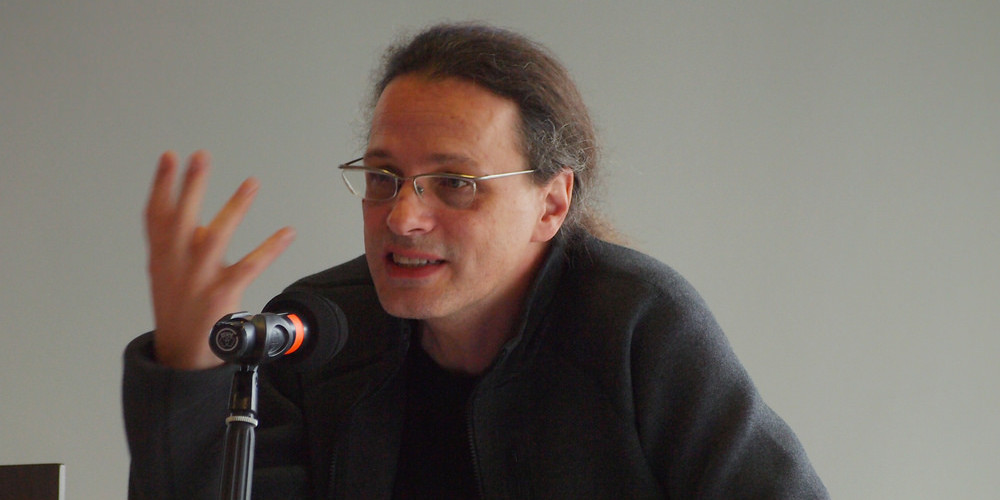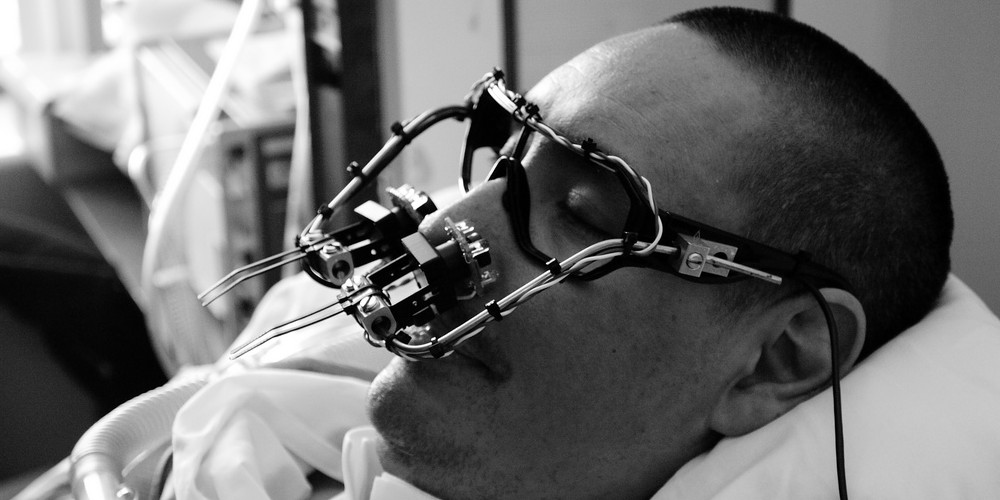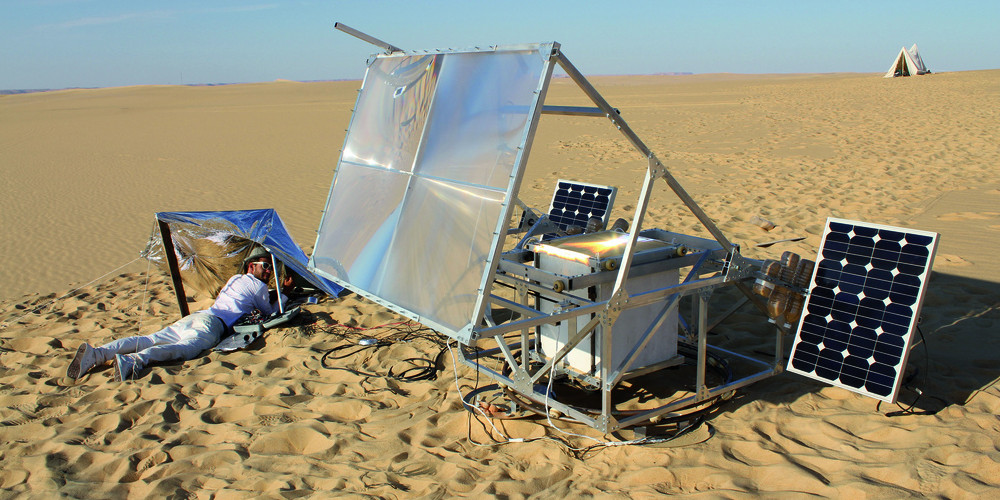
The logo of the Ars Electronica Festival 2014
The 2014 Ars Electronica Festival is set for September 4-8. This year’s theme is “C … what it takes to change,” an inquiry into the prerequisites and framework conditions that have to be in place for social innovation and renewal to emerge, proliferate and make an impact. The focus will be on the concept of art as catalyst. In this interview, Gerfried Stocker, the artistic director of Ars Electronica, gives us his take on what it takes to change.
In the title “C… what it takes to change,” what does the C stand for?
Gerfried Stocker: First and foremost, the C stands for change, like in the title. If we were to formally establish a sequence of terms, then the next would certainly be creativity. And after that, a number of co- concepts—starting with collaboration, proceeding on to co-development, and ending up at commons. The aspect of a sharing economy, a society that’s open and transparent in its dealings with data and information, is a decisive point in this context. Of course, there’s another absolutely essential term: catalyst. When the aim is to initiate a chemical reaction, energy has to be added to the equation. But sometimes that’s not enough and what’s additionally called for is a catalyst, a material that makes it easier for the elements that are supposed to interact to engage one another and launch something new. To put this in concrete terms: a catalyst reduces the amount of free energy necessary for a reaction to occur without itself being consumed in the process.

Gerfried Stocker, the artistic director of Ars Electronica, draws on a phenomenon from chemistry
What does the term of the catalyst have to do with art and culture?
Gerfried Stocker: This is actually one of the most succinctly formulated and elegant descriptions of how I envision the role of art and art’s impact on society. If what we aim to accomplish is bringing about enduring change, then this is possible only if the amount of energy expended thereby is reduced. Here, art and culture can play a major role in that they, as catalysts, through the mere presence of art, creative ideas and developments, bring about a situation in which two materials—or, in this case, two social domains that have difficulties with each other—can interact and work better together.
The beautiful thing about this concept of a catalyst is that the catalyst itself is neither modified nor used up as a result of this change. This is also a very decisive point in the broader discussion about the role of art.
A catalyst can bring about the intended reaction only if it’s a pure element, if it’s not consumed amidst the reaction of the other materials or, to put this in the terms used in the discussion about art, if it’s not compromised thereby. Thus, the exploitation of art or compromising its quality would immediately destroy its catalytic effect. And this is the great challenge of the times we’re living in. We are increasingly grasping that creativity, innovation and ideas are the raw materials of the future. Nevertheless, the question is which social models and agreements ought to govern the dealings with these raw materials. The decisive point here is that these are raw materials that can’t be depleted; rather, they first have to be amassed. And this isn’t something you can profit from right away; instead, you initially have to invest in it.

The EyeWriter (winner of the Golden Nica 2010) is an ongoing, open-source, collaborative research effort to empower people who are suffering from neuromuscular disorder and injury with creative technology.
Another important aspect is the sustainability of innovations?
Gerfried Stocker: Of supreme importance in this respect is how to go about solidly establishing a society’s willingness for change to occur. The aspect of art and cultural education plays an important role here in my opinion, since the constant occupation with ideas and the results and ramifications of art can bring about a more open mood in society, a greater amenability to openness, and readiness for other ideas and points of view. A creative society also tends to be an innovative society. A creative society is one that also tends to advocate innovation and open itself up to it. A creative society is not only strongly receptive to innovation; at the same time, it’s also one that has internalized a commitment to ecological and humane principles. This is the most exciting and important part of this whole matter—that a creative economy gives rise to a creative industry that is removed from a purely commercial and profit-oriented narrative.
The aim shouldn’t be to produce a single product, but rather to create a society that also deals creatively and innovatively with itself on an ongoing basis. Creativity and innovation don’t just appear out of the blue, and they resist being conjured up, no matter how clever the design thinking and strategic innovation management methods implemented to bring them forth. Interdisciplinarity can’t mean that lots of people share the same pie and everybody gets a slice; rather, that together they bake a cake into which everyone has input a piece. It’s especially important here to resist an egotistic conception of creativity and interdisciplinarity; after all, these things are participatory and participatory always means that you have to put something into it, provide for a quid pro quo. You have to see to it that there’s also something in it for others. Only in this way can you make a contribution, and only so can you bring about a situation in which there’s something in it for you too. These are all commonplace truisms, but nevertheless, in reality, it’s the case that this is rarely thought through completely and considered as a comprehensive ecosystem.

Solar Sinter Project (Award of Distinction Prix Ars Electronica 2012) explores the potential of desert manufacturing, where energy and material are abundant.
How does the egg deal with the festival theme?
Gerfried Stocker: With an egg, you don’t know what’s actually inside, or even if anything at all will ever come out if it. An egg requires care—it has to be incubated, and when something does emerge, then it, in turn, has to be nurtured until it can lay an egg of its own. This means that there’s a certain degree of uncertainty—you have to invest in something without absolute assurance as to what will come of it. And even if something emerges, you’re not home free yet; that’s just the call for the next investment. But when you do this, then you’ve set up a mechanism, a system, a structure, that can launch a chain reaction. You can boil an egg, or you can break it open, spoon out the raw material inside and use it without further ado. Or you can invest in the egg and benefit from it on a long-term basis. Just like in the example of the cake, the sharing aspect comes to the fore here too.
Once upon a time, Ars Electronica got its start as an egg. It was incubated and cared for, and you could say that what’s been hatched is a sizeable poultry operation. So, on the occasion of Ars Electronica’s 35th anniversary, it’s nice to look back on what we’ve accomplished, but, at the same time, we’ve chosen a forward-looking theme that reflects on precisely this historical process and illustrates the value of proceeding in this way.
The 2014 Ars Electronica Festival is set for September 4-8. The focus of this year’s festival theme “C … what it takes to change” is the concept of “Art as a catalyst”. More information about the curatorial statement from Gerfried Stocker you will find on the ars.electronica.art/c. In the coming weeks there will be more blog posts around the theme of the festival.
